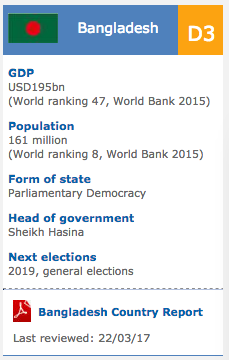Haiti: Haiti Agriculture Profile 2012
2012/03/13
Haiti Agriculture Profile 2012
Reference Date: 27-May-2011
|
FOOD SECURITY SNAPSHOT
|
More rains urgently needed for the 2011 main season food crops
Generally below average and erratic rains in April and the first two decades of May delayed planting of the 2011 main season foodcrops crops, and have negatively affected development of crops. The current agricultural season accounts for half of the annual production of maize, the most important domestically produced cereal. Departments most affected by dry conditions include the main growing areas of the North, Northwest, Northeast, Artibonite and High Central Plateau. More rains are urgently needed in the coming weeks to avoid yield reductions. Harvest of the main season cereal and beans crops is scheduled to start in mid-June/July.
Rice and maize prices stable or declining
Prices of the main staple imported rice, that had increased markedly in the last quarter of 2010, have remained stable or declined since the beginning of the year. In May 2011, in the major market of the capital city Port-au-Prince, prices of imported rice continued on a decreasing trend and were 13 percent lower than a year ago. Prices of rice have also declined in Les Cayes, but in Jeremie and Cap Haitien markets have been unchanged in the last months. Prices of locally produced maize have shown mixed trends in the last year, declining in Port-au-Prince but rising in other markets. Prices of other basic food commodities such as beans, cooking oil, and sugar and wheat flour have been on the increase and are above their levels in May 2010.
Food security improved with control of cholera epidemic and food distributions
The cholera epidemic, mainly in the departments of Artibonite and the Centre, has been reduced since the beginning of the year following a number of humanitarian interventions. This reduction, coupled with food aid distributions, has had a positive impact on the food security situation of vulnerable groups.
07/12/2010 A threatening health emergency is faced by Haiti
 Haiti is currently facing a worrying cholera outbreak. Official sources estimate the death toll in their hundreds and the cases in their thousands. The emergency is mainly localized in the Artibonite and in the Central departments (Department du Centre) but according to unofficial sources some cases have been also found in the crowded Port-au-Prince.
Haiti is currently facing a worrying cholera outbreak. Official sources estimate the death toll in their hundreds and the cases in their thousands. The emergency is mainly localized in the Artibonite and in the Central departments (Department du Centre) but according to unofficial sources some cases have been also found in the crowded Port-au-Prince.
Favourable weather conditions foster second season food production
 Seasonal rains were generally favourable and well distributed allowing the timely onset of the second cropping season. The expected output, although estimates are very preliminary, is considered to be good. Harvesting of the main season rice crop is complete in the central Artibonite irrigated plains (where 60 percent of the total domestic rice is produced), in the plain of Les Cayes and in the small irrigated areas of the North-East department. The irrigated planes have been well supplied with water and inputs. High yield varieties of rice are now well established and widely used by farmers. According to a joint FAO/WFP Crop and Food Security Assessment Mission (CFSAM), summer rice production (the main cropping season) will see an increase of 15 percent compared to the same campaign of previous year.
Seasonal rains were generally favourable and well distributed allowing the timely onset of the second cropping season. The expected output, although estimates are very preliminary, is considered to be good. Harvesting of the main season rice crop is complete in the central Artibonite irrigated plains (where 60 percent of the total domestic rice is produced), in the plain of Les Cayes and in the small irrigated areas of the North-East department. The irrigated planes have been well supplied with water and inputs. High yield varieties of rice are now well established and widely used by farmers. According to a joint FAO/WFP Crop and Food Security Assessment Mission (CFSAM), summer rice production (the main cropping season) will see an increase of 15 percent compared to the same campaign of previous year.
Harvesting of the main maize crop was also complete in September and estimates point to an above average aggregate output of 258 000 tonnes mainly on account of the good precipitation of the spring rainy season and on the favourable climatic conditions observed to date.
The output of the second season rice and bean crops, the harvest of which is currently underway and will last till the end of November, is expected to be above average as precipitation distribution has been generally favourable.
Food security continues to improve but close monitoring is still required in parts
 The good performance of the spring cropping season, harvested till last September, and the satisfactory availability of imported commodities on the market at relatively low prices, at least till September, have had a positive impact on the food security situation in the country.
The good performance of the spring cropping season, harvested till last September, and the satisfactory availability of imported commodities on the market at relatively low prices, at least till September, have had a positive impact on the food security situation in the country.
In July, the CFSAM has identified three areas of the country that were facing a critical food situation and would have required close monitoring in the following months such as the North-West, the central plateau and the vulnerable areas of the département de l’Ouest. According to more recent data, highly food insecure areas are restricted to the southern part of the North-western department and to some localized areas of the South-East and North-East departments.
Prices in Port-au-Prince are generally close to the pre-earthquake levels except for the price of imported rice
 Abundant supplies of both local, as harvesting of cereals and grains from the spring cropping season has been completed in several departments, and imported food are pushing down staple food prices, which have now generally returned to their levels prior to the earthquake.
Abundant supplies of both local, as harvesting of cereals and grains from the spring cropping season has been completed in several departments, and imported food are pushing down staple food prices, which have now generally returned to their levels prior to the earthquake.
In the major market of Port-au-Prince, prices of imported rice have been declining in the last few months and in October 2010, despite a slight increase compared to previous month, are virtually back to the pre-food crisis level of 2008. Quotations of maize continue to be relatively stable.
By contrast, prices of local rice have seen a steep rise since July 2010 as the main season rice crop is currently starting to reach the market. Due to the fact that summer rice production is estimated to be higher than the already good output obtained in 2009. This is expected to reflect on local rice quotations pushing price down in the next months.
- Haiti News
-
- ARUBA: Director of Tourism Turks and Caicos after Irma: Tourism, visitors, hotels current status
- AFGHANISTAN: UNWTO: International tourism – strongest half-year results since 2010
- AFGHANISTAN: Higher earning Why a university degree is worth more in some countries than others
- HAITI: Elections only way to stability in Haiti
- AFGHANISTAN: Global growth will be disappointing in 2016: IMF's Lagarde
- ARUBA: CARICOM and USAID reach agreement on development assistance for Caribbean
- Trending Articles
-
- CHINA: Chinese-supported infrastructure projects change Zambia's landscape
- KENYA: Kenya to hold fresh presidential election on October 17
- TANZANIA: Gas - Women Yet to Benefit From National Cake Tanzania
- BAHRAIN: Diversification efforts propel non-oil sector, which now accounts for more than 80% of GDP
- CZECH: Investors spooked by Property Regulations in Africa
- CANADA: Lower prices and increased productivity








